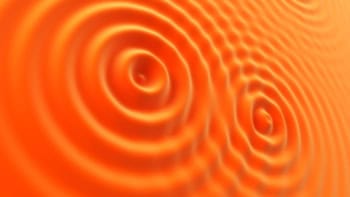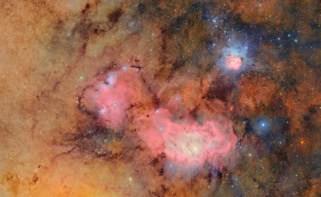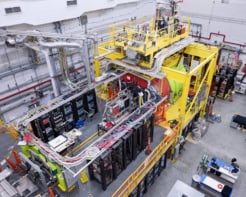Physicists in the US have proposed a new way of testing the veracity of Lorentz symmetry, a fundamental tenet of Einstein’s theory of relativity. They believe that careful observation could reveal tiny differences in how a body falls to the Earth, depending on the time of year at which the measurement is made. If verified experimentally, such observations would indicate breakdowns in Einstein’s theory and provide important clues in the search for a theory that unifies quantum mechanics and gravity.
Lorentz symmetry says that the laws of physics remain the same for any two objects that are travelling at a constant velocity, or rotated, relative to one another. For example, an apple dropped from the height of 1 m in a moving train will take the same time to hit the floor as an apple dropped 1 m at the side of the tracks.
It is possible, however, for a moving body to experience different physics than a stationary particle — if the apples were electrically charged and the train was moving through a stationary magnetic field, for example, the two apples would feel different forces as they dropped.
Preferred directions
What do apples and fields have to do with unifying the theories of quantum mechanics and gravity? Some researchers believe that a route to unification called the Standard Model Extension could involve a background of quantum fields that introduce preferred directions in space–time — much like the stationary magnetic field along the railway.
Such fields could interact with particles, leading to minuscule but theoretically measurable violations of Lorentz symmetry. However, increasingly sensitive experiments have failed to detect any evidence of violations to date.
This has not deterred Alan Kostelecky and Jay Tasson of the University of Indiana, who argue that violations of Lorentz symmetry have yet to be spotted because physicists are not doing the right sorts of experiments (Phys Rev Lett 102 010402).
According to the duo, their new class of violations is very different from those proposed before. In their theory, violation occurs when new fields are distorted by gravity and this can only be detected in experiments involving gravity.
A simple violation could arise from a field represented by an arrow that points in the same direction at every point in space. In non-gravitational experiments, the corresponding arrows will all point the same way making the violation undetectable as all particles are feeling an identical effect. However, a massive body like the Earth curves space–time in its vicinity and so distorts the distribution of arrows. This changes the gravitational properties of objects according to their motion and can produce detectable effects, such as how an object falls to the Earth.
Evaded detection thus far
These violations would not have registered in previous tests of Lorentz symmetry, which don’t involve gravity and instead examine other aspects of relativity such as the constancy of the speed of light and time dilation. “Our key finding is that comparatively large relativity violations could exist in nature and nonetheless have evaded detection to date,” Kostelecky told physicsworld.com. Indeed, he believes that such gravity-related violations “could be as much as 30 orders of magnitude greater than the relativity violations already excluded by sensitive non-gravitational tests”.
“We also show that certain existing and future experiments could observe these effects,” he said. “One striking effect results from the revolution of the Earth around the Sun,” says Kostelecky. “For example, an apple may fall to the Earth at different rates according to the season.” Practical experiments could include dropping weights from a tower or balloon.
If discovered, the relativity violations would represent a profound change in our understanding of fundamental physics and could offer important clues to the nature of the underlying unified theory. “It can be viewed as analogous to Einstein’s discovery that Newton’s theory is not exact,” said Kostelecky. “It is surprising and delightful that comparatively large relativity violations could still be awaiting discovery despite a century of precision testing.”
Exciting premise
Physicists have welcomed the research. Abhay Ashtekar at Penn State University in the US finds the work imaginative. “Though approximations are made in the way gravity is treated within their calculations, the basic premise is still quite exciting,” he said.
Others agree. “This work points to subtle and non-trivial effects which may occur when gravity is not neglected and as experiments measuring such effects need to be highly sensitive, it is quite possible that these interactions — though present — may have so far gone undetected,” says Parampreet Singh at the Perimeter Institute for Theoretical Physics in Canada. “Irrespective of the outcome of future experiments, I find the idea exciting as these experiments can potentially teach us a lot about space–time symmetries and allowed matter-gravity interactions.”
Martin Bojowald at Penn State University also points to the potentially wide-ranging implications. “If such an effect is indeed found, it will have profound importance for the construction of theories such as quantum gravity, which produce these effects but at the same time do not give rise to other potential violations that are already tightly constrained,” he said.



